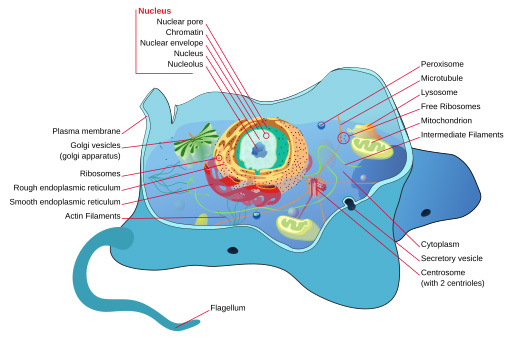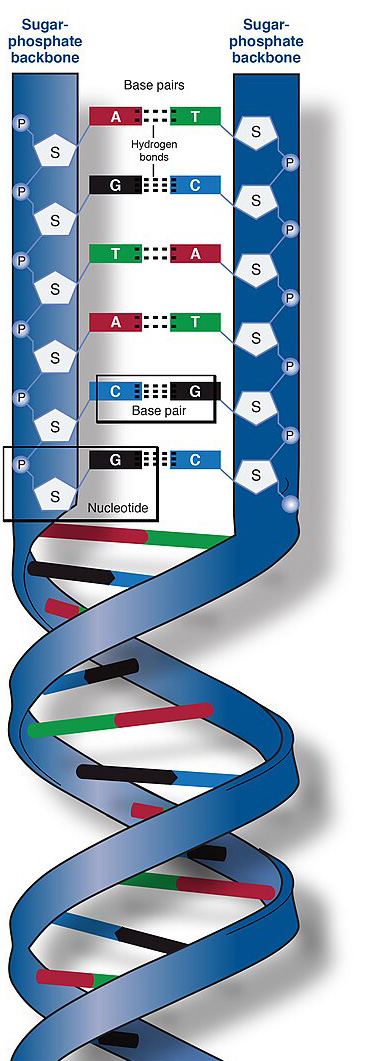GED Science Study Guide: Life Science
As the name suggests, life science concerns the study of living things. In this section, we’ll explore the following topics:
- The Human Body
- Life and Energy
- Energy Flow within Ecosystems
- The Organization of Life
- The Molecular Basis for Heredity
- Evolution
The Human Body
The human body is very complex. The first thing you need to know is that the human body has four levels of organization. They are listed from smallest to largest below.
- Cells
- Tissues
- Organs
- Body systems
Let’s break this down. One of your body systems is the digestive system: the system responsible for absorbing nutrients from food and eliminating waste. Organs in this system include the stomach, small intestine, and large intestine. Each of these organs is made up of tissues, such as the stomach’s lining, which protects the stomach from the acid that breaks down food. Finally, that lining would not exist without billions of individual cells.
Now that you know a little bit about organization and the digestive system, here’s a crash course on some of the human body’s other essential systems.
| Body System | Organs/Structures | What it Does |
| Respiratory |
|
Exchanges oxygen in the air with the carbon dioxide that builds up in the bloodstream. |
| Nervous |
|
Receives and transmits information that makes the body function. Regulates all body processes. |
| Circulatory |
|
Pumps oxygenated blood from the lungs to other parts of the body. Brings carbon dioxide back to the lungs for expulsion through respiration. |
| Skeletal |
|
Supports the body’s structure and produces blood cells. |
| Reproductive |
|
Creates sex cells (e.g., sperm or eggs). In women, the uterus supports a fetus’ development. |
Life and Energy
You likely know the term metabolism , or the rate at which your body turns food into energy. This process would not exist unless every cell in your body had its own metabolism.
After your intestines absorb nutrients from food, something exciting begins happening at the cellular level. Your cells begin turning nutrients into energy. Your cells store this energy in an important molecule called ATP. In the smallest of nutshells, ATP powers everything your body does.
Note
ATP exists in every living thing, which is just one of the many pieces of evidence that all life on Earth has a common origin.
Energy Flow within Ecosystems
You (hopefully) have a balanced diet full of all different kinds of healthy food. However, everything you eat has something very important in common: the source of energy in all that food was sunlight.
On Earth, plants use photosynthesis to turn carbon dioxide from the air and water from the ground into sugar and oxygen. Sunlight provides the energy necessary for these complex chemical reactions. Animals then gain energy by eating the sugar plants create.
However, when an animal eats a plant, they’re not getting all the energy the plant made. A herbivore — a plant-eating animal — can absorb only about 10% of a plant’s energy. When a carnivore — an animal-eating animal — eats an herbivore, they absorb only about 10% of the herbivore’s energy. In other words, energy diminishes as it travels up the food chain.
When a plant or animal dies, energy returns to the system through decomposition. Organisms such as fungi and bacteria break down living things into nutrients that plants can use, and thus the cycle begins again.
The Organization of Life
The organization of life begins with the cell, which is the smallest unit of life common to all living things. Many living things are unicellular , meaning they have only one cell. All life you can see is multicellular, meaning it has many cells. Here is an example of a typical unicellular organism:

Source: LadyofHats, Public domain, via Wikimedia Commons
Don’t try to memorize this image. Instead, take away two important pieces of information:
- The nucleus is in the center of the cell and contains the genetic information. We’ll talk more about genetic information in the next section.
- Plants and fungi have something extra: a cell wall that goes over the outer membrane.
- The cell wall is one of the reasons why a lot of veggies “crunch” when you bite into them!
Cells are complex biological machines, and when a virus enters a cell, it can hijack that machinery. Viruses command cells to make copies of themselves and release these copies into your body. This process kills the cells and, with some luck, alerts your immune system to track down and eliminate virus particles. Your immune system also protects you against harmful bacteria. Typical bacteria look like the unicellular image above.
The Molecular Basis for Heredity
The molecular basis for heredity is DNA, a complex molecule. Much like the hard drive on your computer, DNA stores information.
A Model of DNA

Source: National Human Genome Research Institute, Public domain, via Wikimedia Commons
DNA’s double helix structure (think of a spiral staircase) lets it coil tightly inside a cell’s nucleus.
Unlike the information on your hard drive, you cannot change your DNA. Your body uses another molecule, RNA, to read DNA and produce the vital proteins you need to live.
If you were to look at the DNA from one of your cells under a powerful microscope, you’d see 46 bundles of DNA known as chromosomes. Chromosomes exist in pairs, and each pair has a different purpose. For example, the final 23rd pair determines your biological sex.
The only cells you produce without all 46 bundles of DNA are called gametes (e.g., eggs or sperm). Each gamete has half of your genetic information. When paired with the gamete of another person, your and their traits mix in your children.
Note
More chromosomes do not necessarily mean a living thing is more complex. The french fries you eat come from potatoes with 48 chromosomes!
Evolution
Since the beginning of recorded history, people have wondered why living things look and act the way they do. Some believed in creationism, which is the idea that a deity placed all living things on Earth as they exist today. However, when scientists in the 19th century started finding fossils of extinct animals (e.g., dinosaurs), they began looking for a new theory that explained life on Earth.
One such scientist was English naturalist Charles Darwin (1809–1882). From 1831 to 1836, he took part in a worldwide scientific expedition. During this time, he cataloged fossils and different species. Seeing how birds had adapted to their environments laid the groundwork for the theory of evolution. The theory states that species change over time as a reaction to changes in their environment. He wrote that natural selection — a process by which species either go extinct or thrive based on their compatibility with the environment — led to all current life on Earth.
After Darwin’s death, other scientists built on his theory. The emergence of genetics, or the study of DNA and heredity, in the mid-20th century further supported Darwin’s ideas.
Take our review quiz below to make sure you have a strong grasp on life sciences topics. Then, continue in our GED Science study guide with Earth and space science.
